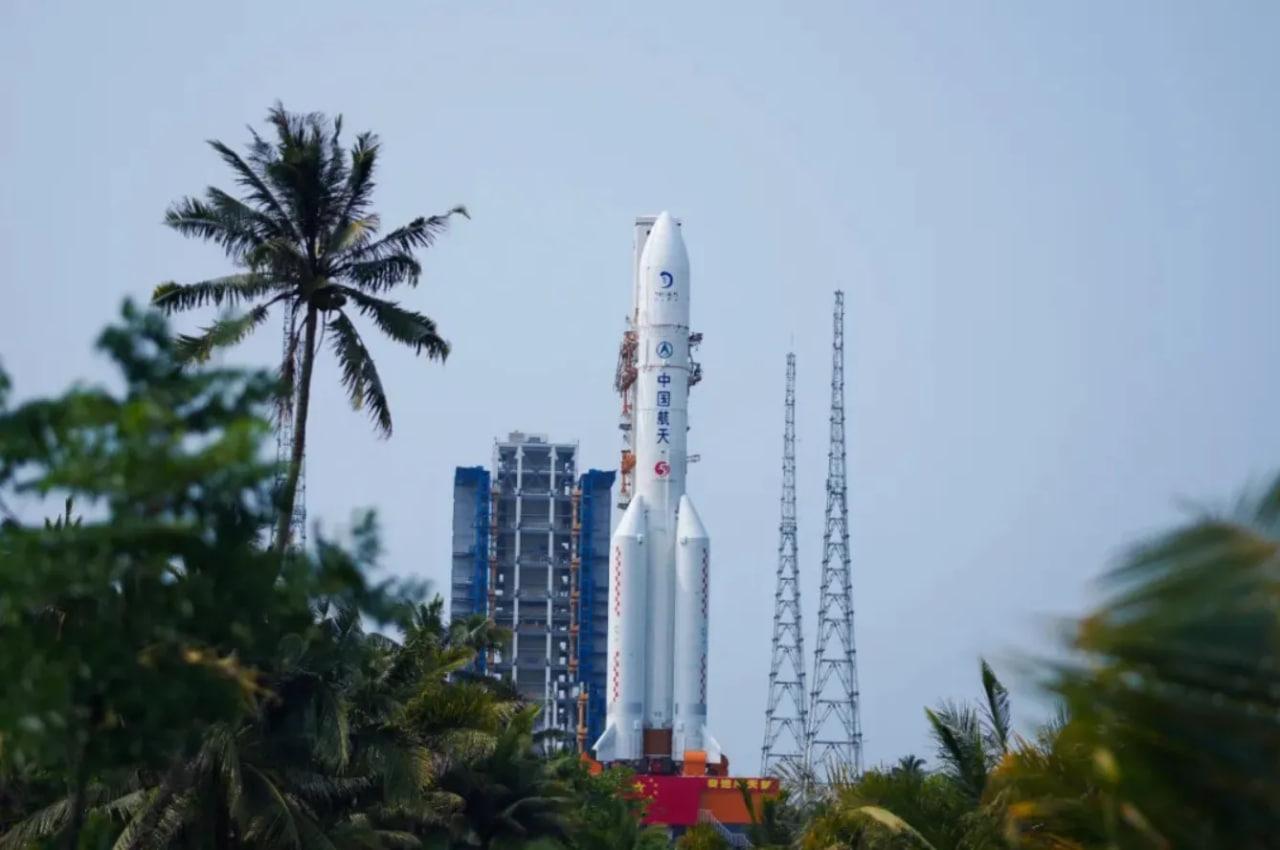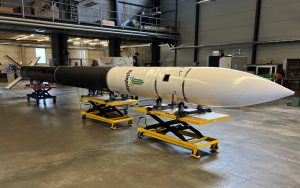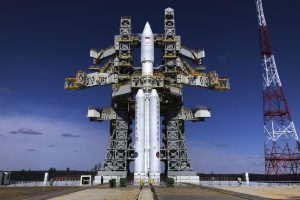China Successfully Launched A Chang’e-6 Mission For Lunar Far-side Sample Return
30th Apr 2024
Early on Friday, 3rd May, China will launch the Chang’e-6 mission to collect up to 2,000 grams of lunar material and return it to Earth. The eighth Long March 5 rocket will land on the far side of the moon. This region is never directly visible from Earth, and this kind of mission has never been tried before.
On 27th April, China deployed the eighth Long March 5 rocket to the launch pad at Wenchang Satellite Launch Center on Hainan island. Earlier in March, a relay satellite called Queqiao-2 was sent into space. It is positioned in a specific lunar orbit to aid communication between the Chang’e-6 mission on the far side of the moon and Earth-based ground stations.
To achieve its goals, the Chang’e-6 mission will employ four spacecraft, weighing approximately 8,200 kilograms collectively.
China Successfully Launched Its Chang’e-6 Mission
Updated on 3rd May
On 3rd May, at 5:30 a.m. Eastern (0930 UTC), the Long March 5 rocket lifted off from the Wenchang Satellite Launch Center.

Twelve minutes post-launch, the initial phase of the second stage burn was completed. Then, about 14 minutes later, another burn to head towards the moon was planned. Spacecraft separation was set for around 37 minutes into the flight.
The Chang’e-6 Mission Aims To Solve The Lunar Mysteries
If the Chang’e-6 mission succeeds, the samples gathered could provide valuable insights into the moon’s past and the formation of our solar system. Additionally, they might explain the compositional differences between lunar rocks on the near side and those on the far side.
The Long March 5 rocket is China’s largest operational launch vehicle. It is 57 meters tall and boasts a 5-meter diameter. The rocket is fueled by liquid hydrogen and liquid oxygen and aided by four kerosene-liquid oxygen side boosters. Notable missions launched by this rocket include Chang’e-5 and Tianwen-1 Mars. Unlike its Long March 5B counterpart, its core stage won’t attain orbital velocity. This should help avoid uncontrolled reentry.
The Previous Chinese Lunar Missions
The mission draws on China’s previous Chang’e-4 mission to the far side of the moon. It’s supported by the initial Queqiao satellite and the Chang’e-5 mission, which successfully returned samples from the near side of the moon in 2020.
However, the Chang’e-6 mission is more complicated due to the need for a communications relay. According to China’s Deep Space Exploration Laboratory (DSEL), the mission will last 53 days from launch to landing. Notably, it is considerably longer than Chang’e-5’s 23-day mission.
The Chang’e-6 Mission Will Land On The Crater
The Chang’e-6 mission aims to land in the southern area of the Apollo crater. It is situated between 150 to 158 degrees west and 41 to 45 degrees south on the far side of the moon, within the South Pole-Aitken (SPA) basin. Scientists believe this enormous and ancient impact crater contains intriguing hints about various lunar riddles.

“Chang’e-6 aims to achieve breakthroughs in the design and control technology of the Moon’s retrograde orbit, intelligent sampling, take-off and ascent technologies, and automatic sample-return on the far side of the moon,” Ge Ping, deputy director of the Lunar Exploration and Space Engineering Center (LESEC), under the China National Space Administration (CNSA), told CCTV, on 27th April.
International Efforts For The Chang’e-6 Mission
The mission will include scientific payloads from France, Sweden, Italy, and Pakistani cubesat. France will provide the Detection of Outgassing RadoN (DORN) instrument. It will detect radon outgassing from the lunar crust. Sweden in collaboration with ESA will contribute the “Negative Ions at the Lunar Surface” (NILS) payload. Italy will provide a passive laser retro-reflector. Finally, the 7-kg ICUBE-Q cubesat is the result of a partnership between Pakistan’s national space agency, SUPARCO, and China’s Shanghai Jiao Tong University.
What’s Next For China’s Lunar Ambitions?
The Chang’e-6 mission is part of China’s broader objective to conduct a crewed lunar mission by 2030. In the 2030s, China plans to establish a permanent lunar base as part of the International Lunar Research Station (ILRS) program.






Thank you for your comment! It will be visible on the site after moderation.